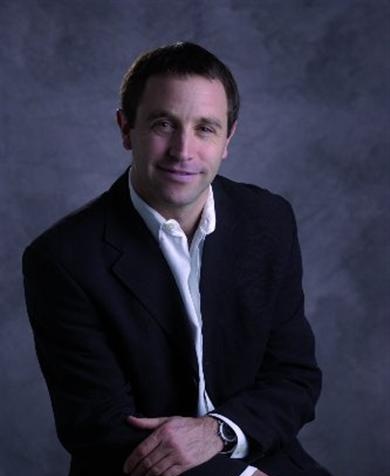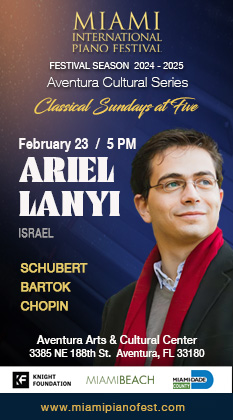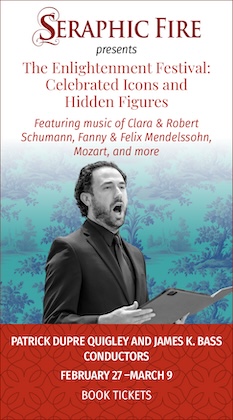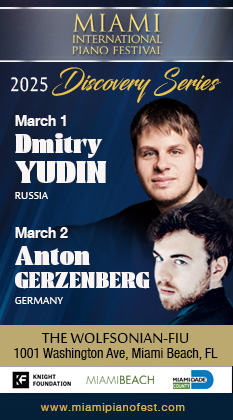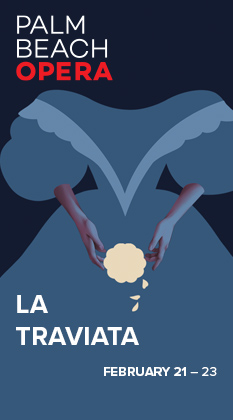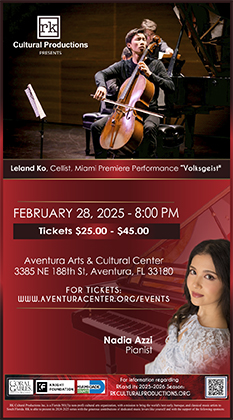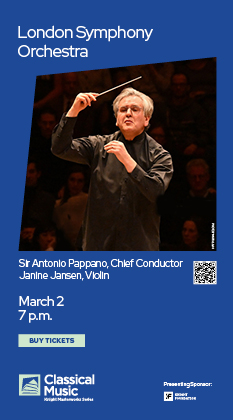Josefowicz, Wigglesworth team up with New World for bracing Stravinsky and Wagner

Leila Josefowicz performed Stravinsky’s Violin Concerto Saturday night with Mark Wigglesworth and the New World Symphony.
The New World Symphony performed two works Saturday night that couldn’t be further apart in tone and sensibility: Stravinsky’s dry, quirky Violin Concerto and a sumptuous orchestral arrangement of Wagner’s Tristan und Isolde.
Led by the British conductor Mark Wigglesworth, the concert at New World Center in Miami Beach delivered both works effectively, from the brittle, unsentimental textures of the Stravinsky to the rich symphonic passion of the Wagner.
Stravinsky’s Violin Concerto has never achieved the popularity of its 20th century counterparts by Prokofiev, Shostakovich or Bartók. But this spiky, oddball work is a perfect vehicle for the American violinist Leila Josefowicz, whose affinity for contemporary music seemed to give her a special feel for the Stravinsky, which still feels fresh and challenging, despite having been composed more than 80 years ago.
The work is highly episodic – a fragment of lyricism here, a burst of drama there, brief duets between soloist and bassoon or concertmaster – all chugging along with a busy concerto grosso tone, despite the 20th-century dissonances.
Josefowicz has never made a priority of a polished, blemish-free tone, apparently preferring the added power and spontaneity that can come by performing with abandon. Yet her bow arm is so steady and her technique so rock-solid that she could plunge into the work with a confidence that allowed her to nail all the notes with that much more power and authority.
In music that called on her bow to bounce rapidly across the strings, it seemed to gain greater height than that of most violinists, as in the almost brutal ascent up the two lower strings in the first movement, giving the passage an extra jolt of energy. In a moment of dark, sudden drama in the second movement, the violin plays a series of chords over sustained notes in the orchestra, and her aggressive style brought overpowering bite and savagery. Yet in the work’s melodic moments, she showed she could play with a glowing tone that would have suited the Mendelssohn concerto.
A freakish element of the concerto is that each movement opens by requiring the violinist to hit a chord that involves what’s probably the biggest stretch of the left hand in the standard repertoire – an 11th, while the most ever required in other works is a 10th, and that’s not easy. Josefowicz nailed it each time.
From the dry neoclassicism of Stravinsky the concert proceeded to Wagner at his most plush, Tristan und Isolde: An Orchestral Passion. This is a 1994 arrangement of the opera by the Dutch percussionist and arranger Henk de Vlieger, who has done the same retooling with the Ring, Parsifal and Die Meistersinger.
With the vocal parts absorbed into the winds and brass, the work gave the effect of a vast tone poem. Compressed into a short time span compared to the five-hour opera, the regularity of intense climaxes proved a little too much, but this was a magnificent vehicle for the orchestra, with strings playing with great depth and resonance, warmth and agility in the winds, and brass delivering tones that were eerie, ominous and ultimately overpowering.
Despite a ragged entrance here and there, Wigglesworth drew a performance of rich color and drama from the orchestra. The music symbolizing Isolde’s desire for Tristan had a delirious, almost out-of-control feeling. The great climactic moments, such as the foreshadowing in the Prelude and Isolde’s Liebestod, weren’t just loud—any conductor can accomplish that. Wigglesworth built them with such skill that just when you thought the intensity had peaked and couldn’t go any higher, he would pull back on the tempo and draw even more power from the orchestra.
The New World Symphony will repeat the program 2 p.m. Sunday at New World Center in Miami Beach. nws.edu; 800-597-3331
Posted in Uncategorized
Leave a Comment
Sun Dec 15, 2013
at 12:04 pm
No Comments
